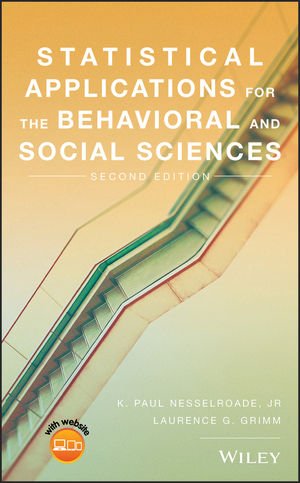(Essay found in Nesselroade & Grimm, 2019; pgs. 46 – 47)

Although ancient civilizations like the Egyptians and Chinese used tabulation and other simple statistics to keep track of tax collections, government expenditures, and the availability of soldiers, the modern use of statistics arguably began with the Englishman John Graunt (1620–1674). Graunt tabulated information on death rates in his home town of London and noted that the frequency of certain diseases, suicides, and accidents occurred with remarkable regularity from year-to-year. This realization, by the way, helped to develop the establishment of insurance companies. Graunt also found the occurrence of greater biological male than biological female births. However, due to the greater male mortality rate (occupational accidents and wars), the number of men and women at the marriageable age was about equal. Graunt believed that this arrangement was nature’s way of assuring monogamy (Campbell, 2001).
Most early uses of statistics revolved around simple descriptions of data, but starting around the 17th century advances in statistics began to take place, mostly springing from mathematicians’ interest in the “laws of chance” as they apply to gambling. The French mathematician Blaise Pascal (1623–1662) was asked the following question by Chevalier de Méré, a professional gambler: “In what proportion should two players of equal skill divide the stakes remaining on the gambling table if they are forced to stop playing the game?” Pascal and Pierre Fermat (1602–1665), another French mathematician, arrived at the same answer, although they offered different proofs. It was their correspondences in the year 1654 that established modern probability theory (Hald, 2003).
The work of Pascal and Fermat was actually anticipated a century earlier by the Italian mathematician and gambler, Girolamo Cardano (1501–1576). His volume, The Book on Games of Chance, published posthumously in 1663, contains many tips on how to cheat when gambling, and established some of the origins of probability theory. Cardano also practiced astrology. Indeed, by using astrological charts he even predicted the year of his death. Upon arriving at that year and finding himself in perfect health, he decided to drink poison to ensure the accuracy of his prediction (Gliozzi, 2008)!
Yet more advances in the field of statistics occurred in the nineteenth and early twentieth centuries. Many of the chapters of this, and every other statistics textbook, are based on the statistical advances of the period between 1850 and 1930. Sir Francis Galton (1822–1911), among other things, formalized a method for making predictions of one variable with knowledge of a second, related variable (regression analysis) (see also Spotlight 16.1). William Gosset (1876–1937) ushered in the era of modern experimental statistics by developing analyses that could allow a researcher to make generalizations based on only a small number of observations (the t test) (see also Spotlight 9.1). Sir Ronald Fisher (1890–1962) made extensive contributions to the field of research design and developed statistical analyses that can be used to compare the relative influence of several different treatment variables on a dependent variable (the F test) (see also Spotlight 12.1). Contemporary statisticians are continuing to make advances in statistics, which allow researchers to ask increasingly complex questions about the mysteries of human behavior.
Find this and other similar side-bar discussions in the Nesselroade & Grimm textbook.
Campbell, R. B. (2001). John Graunt, John Arbutnott, and the human sex ratio. Human Biology, 73(4), 605-610.
Gliozzi, M. (2008). Cardono, Girolamo. Complete dictionary of scientific biography. Retrieved from http://www.encyclopedia.com/people/philosophy-and-religion/other-religious-beliefs-biographies/girolamo-cardano
Hald, A. (2003). A history of probability and statistics and their applications before 1750. Hoboken, N. J.: Wiley.